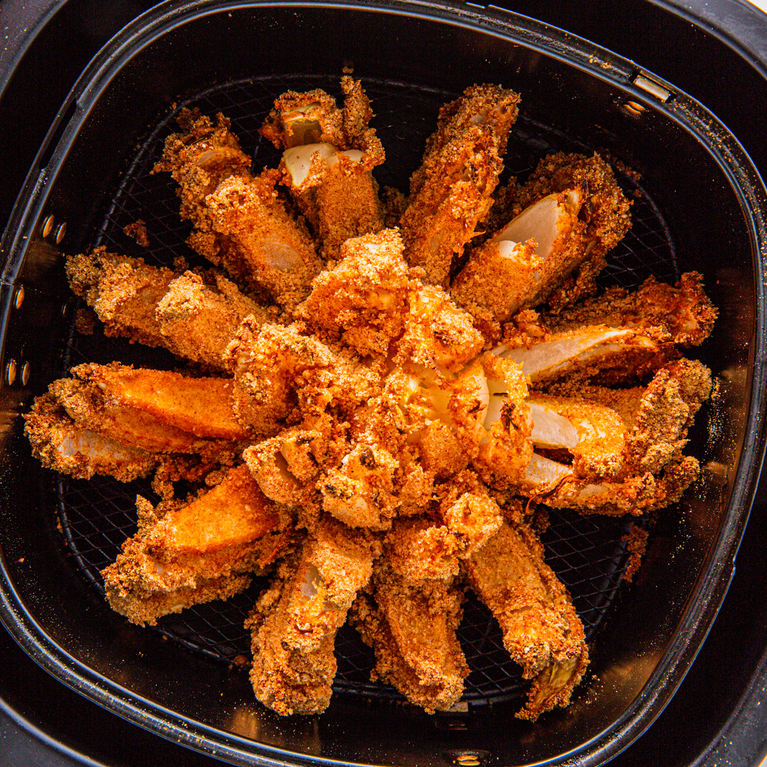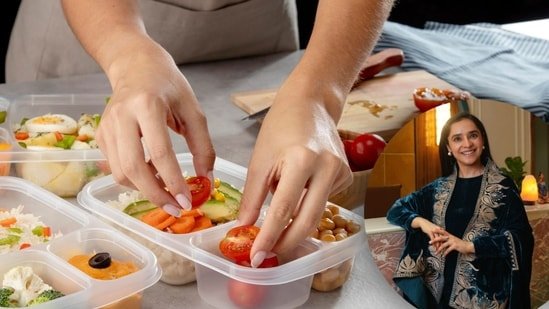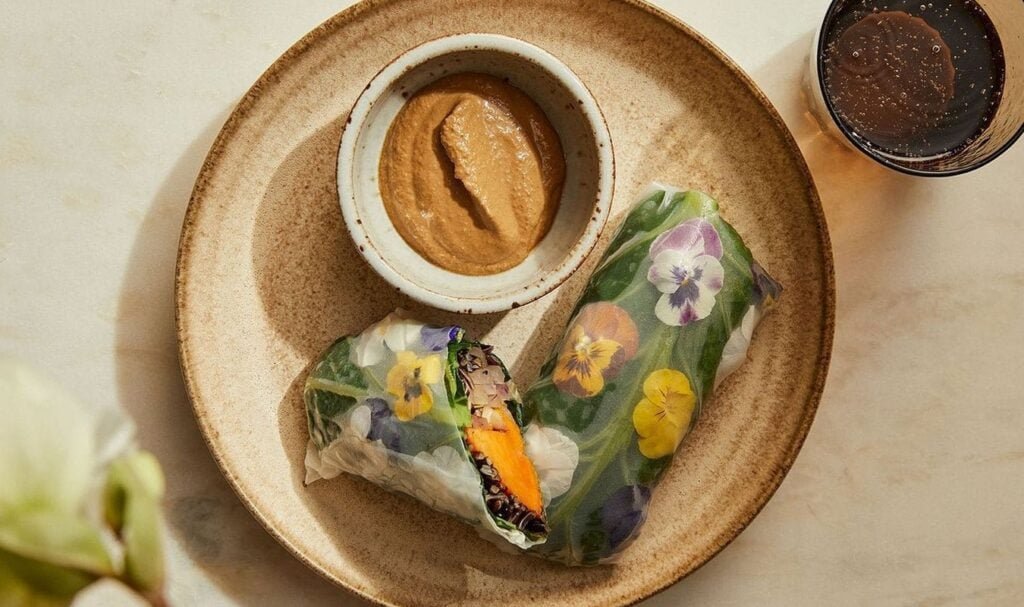To understand how David Eisenberg became one of America’s greatest champions of culinary medicine, it helps to know that his childhood is divided into a before and after.
Before: He grew up amid neat rows of cream puffs and the warm smell of yeast, learning the alchemy of food at his father’s Viennese-Jewish Brooklyn bakery. Then came the after: His father died at age 39 of a heart attack, and he lost his three grandparents within the same year. Eisenberg was 10 years old.
“Nobody talked about it, as was the culture of the times, thinking that if the parents didn’t talk about it, the kids wouldn’t suffer,” said Eisenberg, a physician and director of culinary nutrition at the Harvard T.H. Chan School of Public Health. “It made me want to study medicine, as you can imagine, if only to understand what had just happened.”
But the happy days Eisenberg had spent as a young baking apprentice to his father would also shape his career. In partnership with Harvard colleagues and the Culinary Institute of America, he founded the annual Healthy Kitchens, Healthy Lives conference, first held in 2006 and aimed at helping health care professionals learn from chefs about cooking as a public health intervention. Today, more than 8,000 people in health care have been through the training. Later came the Teaching Kitchen Collaborative, a nonprofit dedicated to expanding the network of hands-on environments where doctors, patients, and many other members of the public can learn how to mince and baste their way to nutritious — not to mention satisfying — home-cooked meals.
“I’ve cooked every day of my life. It’s how I express myself creatively,” Eisenberg said. “And my greatest joy is really cooking delicious and healthy things for people I adore.”
Though Eisenberg has been working to fight chronic disease via healthy cooking education for around 25 years, the Make America Healthy Again movement has placed renewed emphasis on the importance of choosing minimally processed foods for ultra-processed options wherever possible — which often means preparing vegetables, protein, and grains yourself. Health secretary Robert F. Kennedy Jr., as part of his new strategy to improve the nation’s health, is pushing a plan to introduce new nutrition education requirements for medical students; such programs often incorporate teaching kitchens as well.

At the same time, with the end of SNAP-Ed under the federal budget bill signed in July, teaching kitchens across the U.S. will lose funding for programs aimed at people on food benefits. Eisenberg says that education about how to shop for and prepare nutritious meals is particularly important for people on lower incomes, who may not have easy access to fresh produce. Frozen and canned vegetables, for example, can be excellent alternatives.
“If you show people here’s your meal, on average it costs 80 cents per person, people’s minds are blown. They think, that’s half of what it would cost to go to a fast food restaurant,” he said. “That’s the future I would like people to be exposed to. But until they experience it, it’s just talk.”
Eisenberg spoke with STAT about why teaching kitchens matter, how motivational interviewing helps patients make lifestyle changes, and how the principles of Chinese medicine have informed his approach to medicine.
This interview has been edited and condensed for clarity.
Since teaching kitchens are such a big part of your work, can you talk about the origins of that idea, and why hands-on training is so important for physicians in particular?
The origins of the idea of a teaching kitchen go back to my own personal history and my early experiences as the first American medical exchange scholar to China in the 1970s.
I went to Harvard College and asked and was given permission to do an independent study of Chinese medicine. The basic text of Chinese medicine is called the Yellow Emperor’s Classic of Internal Medicine; it’s 25 centuries old. It says prevention is always superior to intervention, and the ways we learn to eat and control our thoughts not only impact our health, but determine our recuperative capacity.
So I spent much of college and medical school dreaming about going to China. I learned Chinese, and I was accepted as an exchange scholar between my third and fourth years of medical school.
While I was there, the idea of a teaching kitchen became very evident to me. Chinese medicine was trying to remind people of the ancient wisdom from every culture that says how you eat, cook, move, and think matters. So to me, the idea of a kitchen as a place where we could teach people to eat, cook, move, and think better, smarter, was self-evident.
It was not until 1998, 20 years later, that I brought the idea to the heads of the Nutrition Department at Harvard. We created the conference Healthy Kitchens, Healthy Lives.
It’s a conference that takes place in the Culinary Institute of America’s extraordinary conference center in Napa. We use it to bring doctors and other health professionals together, to teach them what foods to eat more of, less of, and why, based on science. And how to translate those facts by a chef into healthy, delicious, affordable, quick, spectacular dishes, which they watch on the main stage. They taste more than 300 of them over three days.
But then they’re brought into the kitchen. In two hours, groups of doctors create a banquet, which they then take pictures of and call home about and can’t wait to replicate when they go home to cook for their family.
Why don’t physicians cook? Why don’t they already have this background in their relationship with food?
Because they’re the same as every other American who thinks about how to cook and doesn’t appreciate how easy it is, how fun it is and the joy of making healthy, delicious foods for their family. It’s been three generations since people learned from their parents or grandparents how to cook. Everybody’s been working for the last 40, 50 years. So that ancient tradition has been decimated by modern life.
And I suppose also physicians notoriously have long hours.
The common complaint is, I don’t have time. Physicians and non-physicians can all say, I don’t have the skills, I didn’t know where to start, I’m intimidated.
But I remember when Jane Fonda was promoting exercise in the 1970s. The first health clubs were places that only people who were physically beautiful went to, because everybody else was intimidated by the machinery. The intimidation was there until smart entrepreneurs said, Let’s create a welcoming environment where we could say to people, come in, we will help you. And now there are gyms everywhere, for everyone.
The same is true of the kitchen. Imagine if we could bring children into the kitchen in K-5 school classes. Imagine Home Ec 2.0 in the United States, so that every child had fun cooking something in the garden of their school that they could bring back home and cook with their parents.
If you know how to make one stir-fry — high heat, oil, a few aromatics — you can change the aromantics, you can change the vegetables, you can add or change the proteins. If you can make one, you can make a thousand.
If we can teach people 10 or 12 techniques to sear, saute, stir-fry, make whole grains, cook eggs — the techniques are what we teach. Doctors at Healthy Kitchens, Healthy Lives watch, and by doing it, they realize, Oh my God, if I can do this, my teenage daughter on the beige diet could do this. Which means my patient on SNAP can do this. It’s an epiphany.
Part of the thesis behind teaching kitchens seems to be that an underlying issue with chronic disease in the U.S. is that people aren’t cooking; they’re eating ultra-processed foods and fast food. So if you teach them to cook, they will start eating healthier as a result. Is that the idea?
Not only will they, but they’ll crave the non-processed food.
Let’s remember, though, that the Chinese dictum was how you eat, how you move, how you think. So we not only talk about food and cooking, we also say, Here’s why you need to move and exercise.
And then the third leg of the three-legged stool is mindfulness. People talk about mindfulness in the abstract and think of it as just meditation. Well, you can be mindful in prepping the vegetables — if you ever watch a chef, it’s about the most mindful activity there is, because it’s a meditation. Take your mind off the knife, you [hit] a finger. Great chefs are like Zen Buddhist monks. I mean, watch The Bear.
Then there’s the mindfulness in tasting the dish. Most Americans today live vis-a-vis food mindlessly — we’re eating while we’re watching the game, listening to music, reading a paper.
There’s a Buddhist named Thich Nhat Hanh, a very famous teacher of Buddhism, who said, when you eat, just eat.
Yes, I saw the illustrations of the mindful eating corners that you have at Harvard T. Chan and at some other places.
You could build a mindful eating space next to a teaching kitchen. You could take a technological fast while you had a culinary feast. What if workers had 15 minutes a day where they ate delicious food and nobody looked at a phone and nobody spoke?
The last piece is mindfulness is recognizing when you’re full, which, again, is something which, in the West, we don’t really pay much attention to. But in Japan, there’s actually a word for it. [Hara hachi bu.] Children are encouraged to realize when they’re 75-80% full, and that’s when they stop.
Can you imagine if we taught our children to realize when they’re 75% full and then it’s enough?
Then there’s the health coaching part. There’s a whole literature that physicians are not usually made fairly aware of, what’s called a motivational interview.
The expert medical model is where historically physicians have said, We see your weight has gone up, your blood pressure has gone up, your blood lipids have gone up. Your liver is showing signs of inflammation. You need to go to the gym. You need to lose weight. It doesn’t work. It’s accusatory and not helpful.
The motivational approach to a patient who’s going in the wrong direction is, let’s do an exercise. Describe yourself to me at the healthiest point in your life. Where were you? How old were you? What did you look like? Tell me about your physical condition. What could you do then that you can’t do now? What would you like to get back to? How motivated are you to get there? What gets in the way?
And then begin the process of saying, what if we made one step in the direction of that thing that you want to get back? It’s dancing, or playing basketball, or weighing 50 pounds less, or being able to take care of carrying your groceries yourself, or picking up your grandchild. How do you get somebody where they want to go?
So first, you have to explore what motivates them, and that’s always the anchor. Because if we teach people how to eat, cook, move, and think better, it’s the motivation that will keep them on track. If they forget why they want to change, then no amount of skill will help them change. It’s the light from the lighthouse that guides them to where they’re trying to go.
STAT’s coverage of chronic health issues is supported by a grant from Bloomberg Philanthropies. Our financial supporters are not involved in any decisions about our journalism.



